As a proud garden-variety (but trained!) horticulturist, who has tended gardens on Sydney’s leafy North Shore for almost thirty years, I have learnt a few things about my craft. Some of it has come to me by application on site, other gems have come from friends (often fellow horticulturists), and some were either learnt while I studied horticulture in the early 1990s or ongoing inservice, or have been gleaned from Google; or the many fine garden books I still possess.
Also, as a former National President of the Australian Institute of Horticulture (Inc.), former member of AILDM, and current member of the Horticultural Media Association (NSW), I have built up a substantial body of gardening knowledge and I thought that other gardeners and horticulturists may be interested in some of the more salient points that I have discovered.
SOME PLANTS ARE DUDS, EVEN IF THEY ARE FASHIONABLE
We live in environmentally sensitive times, so I am amazed how often clients and friends want to perform vandalism against Mother Nature by planting something recommended to them, sometimes by horticulturists, but which reek havoc as they need constant spraying or produce seemingly unlimited offspring.
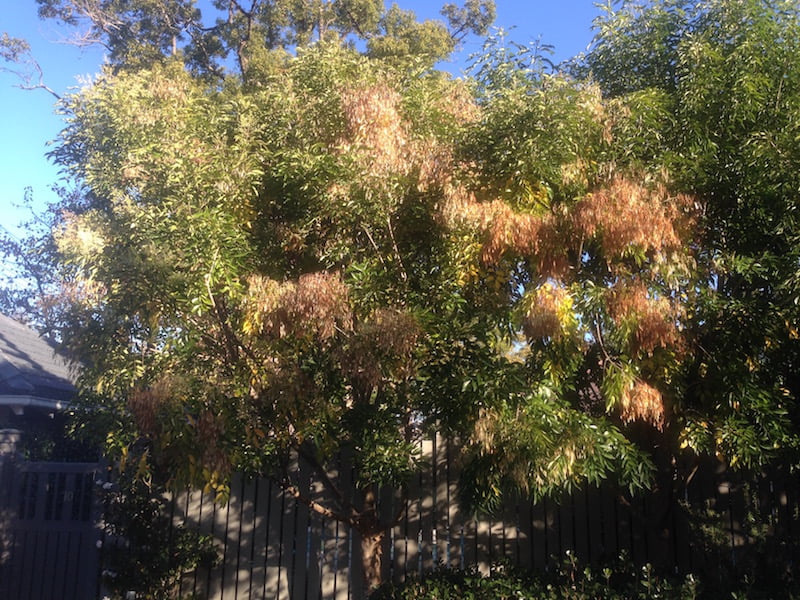
Fraxinus griffithii, evergreen ash, covered in seed
The two worst offenders for me, which I spend my life dealing with, because some landscaper has imposed them on clients’ gardens, are the evergreen ash (Fraxinus grifitthii) and sweet viburnum (Viburnum odoratissimum). They are both promiscuous, the former like privet, and the latter so heavily diseased-prone, you will spend your life spraying it for mites, aphids and other pests. I include ‘Emerald Lustre’, a cultivar of Viburnum odoratissimum, in this list, even though others have tried to tell me it is less disease prone.
An excellent under-utilised hedging plant alternative to these plants is Xylosma senticosum. It is fast growing, almost disease free, glossy leaved, clips well, and is hardy once established.
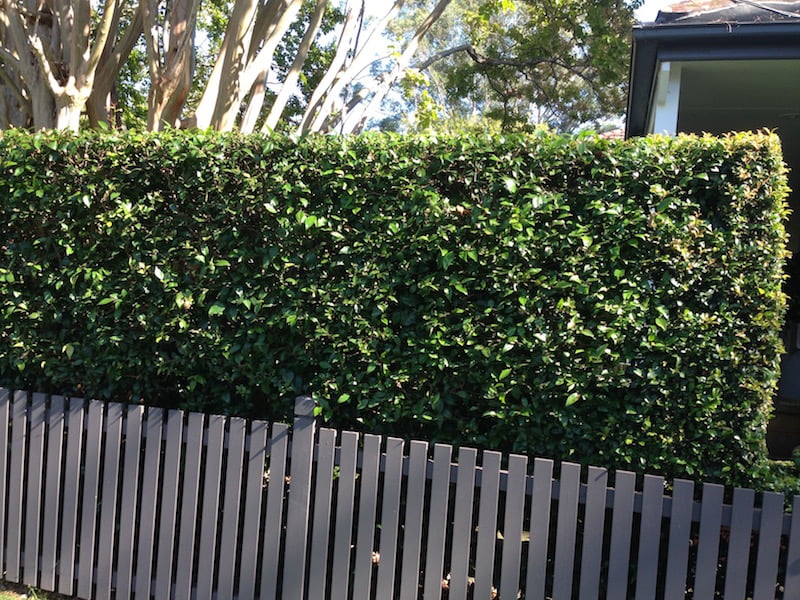
Clipped hedge of Xylosma senticosum
DON’T PLANT ANYTHING FOR A CHALLENGE!
Several years ago a friend bought a house in Leura in the Blue Mountains above Sydney. I offered to buy him a plant as a housewarming present. I imagined that he would want some cool climate plant like a smoke bush (Cotinus), lilac (Syringia), or maybe a rhododendron. He was touched with my offer and exclaimed, “A frangipani!” I pointed out that this was not a suitable plant for a climate prone to frosts, and he replied:
“I like the idea of a challenge!”
Perhaps wrongly, I did buy him want he wanted, and saw over the next couple of years a robust (expensive) plant decline to death, even though it was kept in a pot. Wicked! Cruel!
RSPCP FOR PLANTS (Royal Society for the Prevention of Cruelty to Plants)
The point before this leads into an idea I have to create an organisation to protect plants against human beings! Years ago, in sunny Northbridge, I crossed the road from a garden I maintained, and told the man collecting his mail, that if there were an RSPCP, I would have to report him for cruelty to his Belgium hybrid clivia. They were planted in full afternoon sun and were seriously stressed.
After he ascertained that even though I seemed crazy, I probably wasn’t dangerous, he told me he had better hire me to save the plants. I have now worked for him for over ten years. Obviously the clivia were the first plants moved!
So, please do not prune plants hard mid winter, wherever you live, grow shade-loving plants in afternoon sun, plant plants with half the root ball above ground, forget to water…or… I may have to come after you.
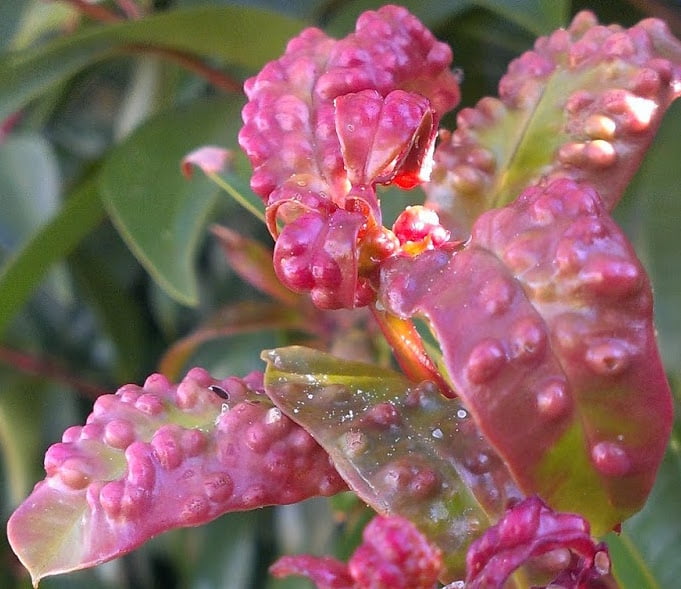
Pimple psyllid on lilly pilly
DISEASE RESISTANCE
When choosing plants many of us are dazzled by stunning flowers and luxuriant foliage, when we see it in the nursery. Rarely do people consider whether a plant is disease resistant or not, or whether it is suitable for their particular situation. At nurseries there are (some) naughty sales people who will sell you a plant, knowing you will spend your life spraying it. Again this is environmental craziness, especially for ornamentals. Ask about disease resistance or check online before visiting the nursery.
A few years ago, to their credit Alpine Nurseries at Dural, near Sydney, they removed several Syzgium australe cultivars that they stocked, as they were prone to psyllid, after I made a request for them to stock psyllid-resistant cultivars. Thank you Craig Rich!
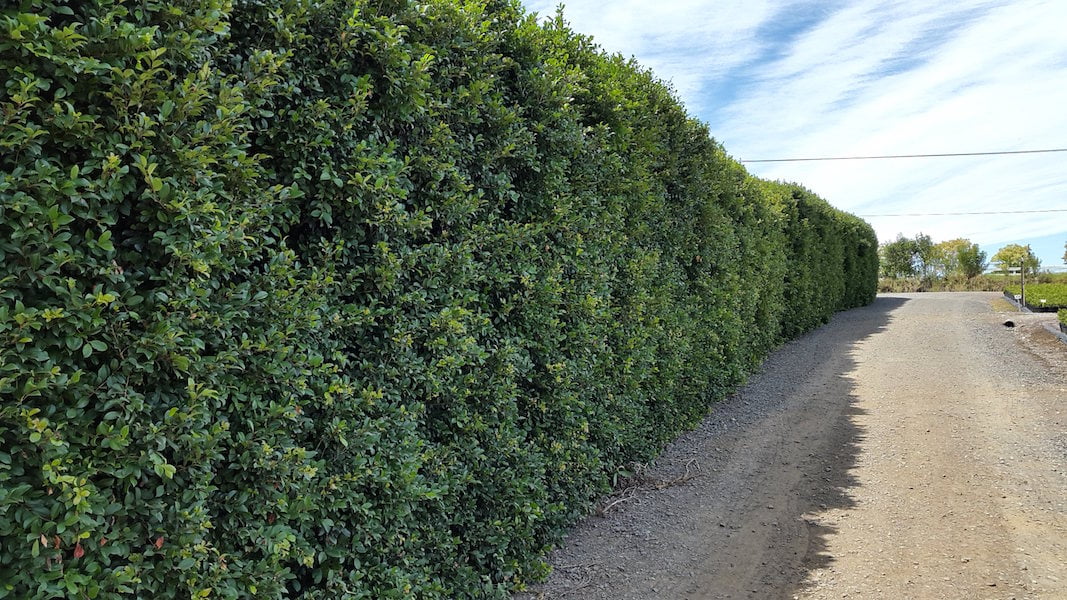
Psyllid-resistant Syzygium Select Form growing at wholesale nursery Alpine Nurseries in northern Sydney
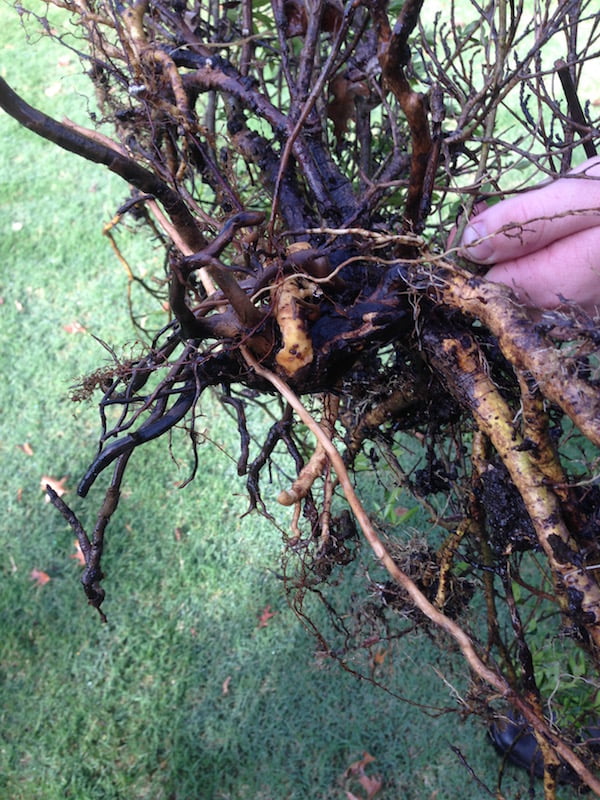
Don’t leave plant roots exposed too long
ROOTS DO NOT LIKE TO BE OUT OF THE GROUND!
If you dig a plant up, do not leave its root ball exposed for too long, especially not in the sun!!!! Steep the root ball in water with seaweed extract added. Cut back leaves by a third to half to aid recovery (less shock). It is amazing how such a practice aids a successful transplant. I ask clients to imagine if they had roots, happily in the ground and then suddenly ripped out and exposed to sun and air. If you were a plant you, too, might go into shock!
YOU MAY BE A ROCKET SCIENTIST, BUT THAT DOES NOT MAKE YOU ARE MORE KNOWLEDGEABLE ABOUT PLANTS THAN I AM!
I am sometimes bewildered by people, usually men, who I accept are more intelligent and better educated than I am, who will still try to tell me that they know more about plants and their care than I do. I do not know everything and only yesterday told a friend that I did not know the name of a plant we saw. Often, though, I have valuable information to share, sometimes even for free, so it can be worth listening to me and other horticulturists.
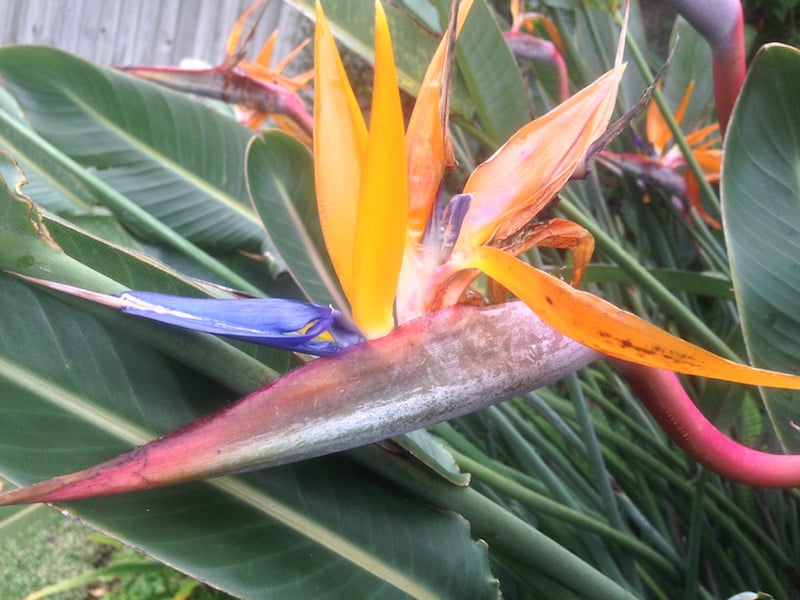
Dying keel on Strelitzia flower
AUSSIE YACHTS NOT ONLY ONES WITH HIDDEN KEELS
The flower of Strelitzia reginae is a dramatic, colourful sculpture. Years ago a florist showed me that by removing dying keels (the orange wing on the top), the flower can be made to flower for a much longer period, as new ones rise up to replace the one removed. Importantly, this works whether the flowers are cut or left on the plant. There are plants in some of the gardens I maintain which are covered with flowers, because I have carried out this simple maintenance tip. It is important to pull the failing keels out gently, so as not to pull out the healthy ones coming on as well.
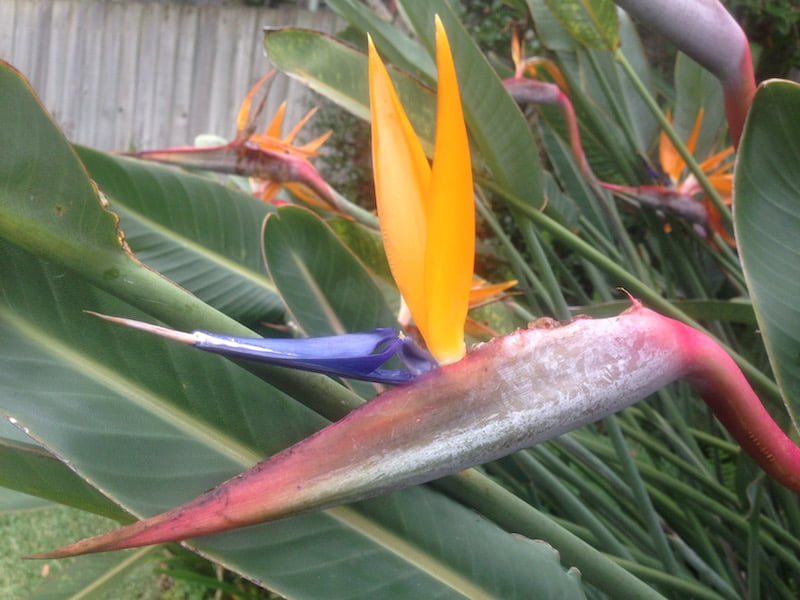
Strelitzia flower with keel removed
WATERING, MULCHING AND FEEDING
It does seem crazy to have to mention these three basic garden activities, but is amazes me how they are often neglected by people who consider themselves gardeners. It is true the way a plant looks after over-watering or under-watering can be similar, but it is important to arm yourself with the knowledge of how much water a plant needs. Some succulents can go without water for ages, especially in winter, while some ferns need constant vigilance.
Mulching your garden will suppress weeds and hold moisture, and the organic forms will improve the soil texture as they break down. Mulching will also keep the soil warm in winter, cool in summer. If you are selling a house, mulching the garden gives the same affect as when you frame a picture: it enhances it and finishes it off.
It is surprising how well plants can grow without intervention. However, if you do give them some TLC, such as a feed, it is hardly surprising that they thrive, grow more lushly, flower and fruit more bountifully and look better, too.
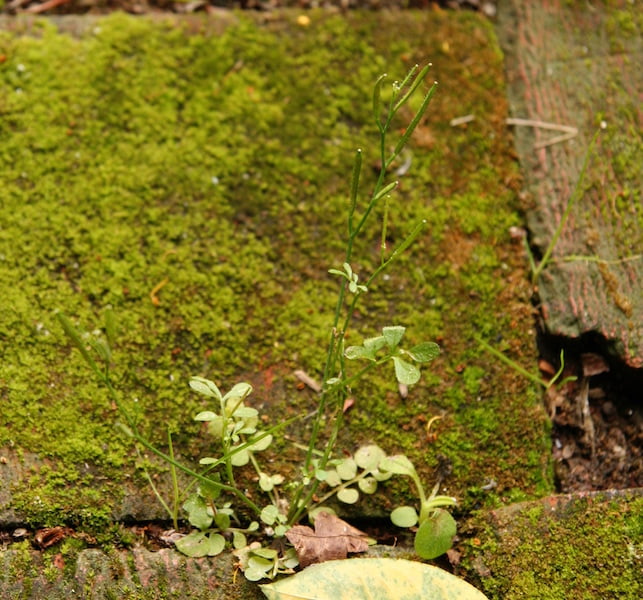
Weeds like flickweed are little time bombs waiting to go off
WEEDS!
I tell my clients that weeds are really time bombs. If left, they will explode by some mechanism to spread their genes. It is good to weed, but it is important to consolidate your weeding with a follow up, especially before the weeds go to seed. If you use the herbicide glyphosate, take off flowers and seeds before doing so. Avoid ‘Once-A-Year Path Weeder’ in areas near garden beds, or you could kill existing plants and create a situation where you cannot grow anything in the bed for nine months after using this herbicide as it contains a pre-emergent which stops seeds germinating.
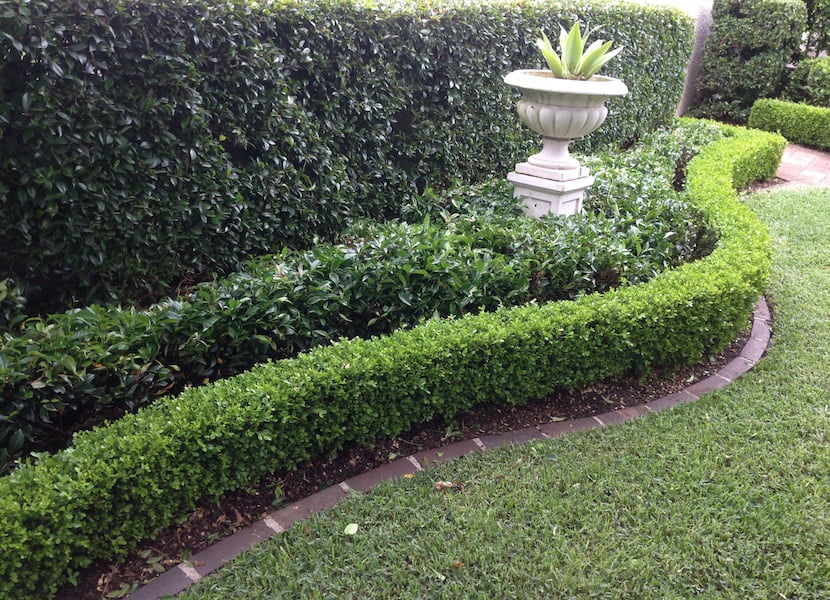
Healthy Japanese box hedge
BUXUS (OILS AIN’T OILS)
This can be true of many plants – that one species does not perform well where another does. I find box (Buxus) is an excellent example of this. Japanese box (Buxus microphylla var. japonica) is a robust, glossy green leafed plant with heart shaped leaves. It is much more disease resistant than its cousins, the Dutch, English and Korean box. These related species and varieties like the sun less, grow much more slowly, are less bushy, and are also more likely to suffer from scale problems, at least in the temperate climate of Sydney. If you are going to use box, check which species is right for situation your climate, before buying.
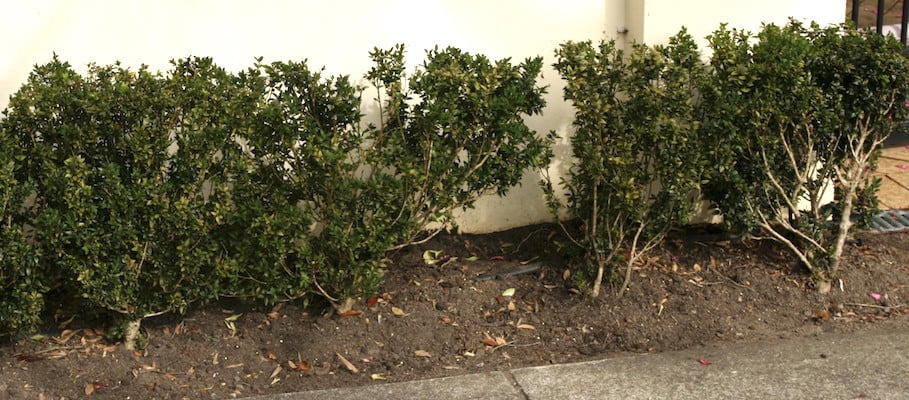
English box does not thrive in warmer climates
SOILS MAKE US HAPPY!
Not surprising to a gardener, there are benefits to working in the soil, as there is a microbe in the soil that seems to make us happy. I had heard of this on an ABC news program several years ago, as apparently it was discovered as a possible aid to cancer patient’s mental health after they have had chemotherapy. I later read about it on a post on GardenDrum (Microbes Make You Merry) and, most recently, learnt more about it from Sophie Thomson, the ABC Gardening Australia presenter (Garden for Life at the Royal Adelaide Show). Dig deep and be happy!
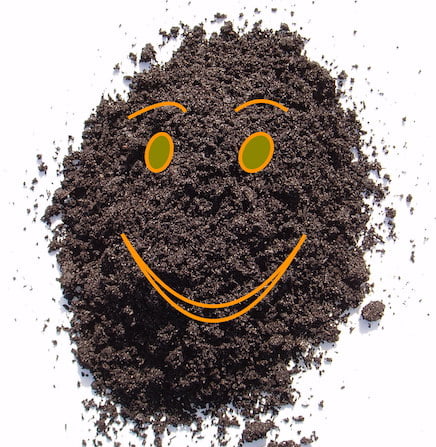
CONCLUSION
Plants are living things. We need them to live for all kinds of reasons, but especially as they produce the oxygen we need to breathe. They can actually survive without us, but the reverse is not true. However, we can all bring sunshine into the lives of plants by giving them some care. Think about the environment. Choose wisely, so the climate, aspect and general situation is appropriate. Give them the right amount of water. Feed them and mulch them. Show them some appreciation and our earth will be the better for your efforts.
